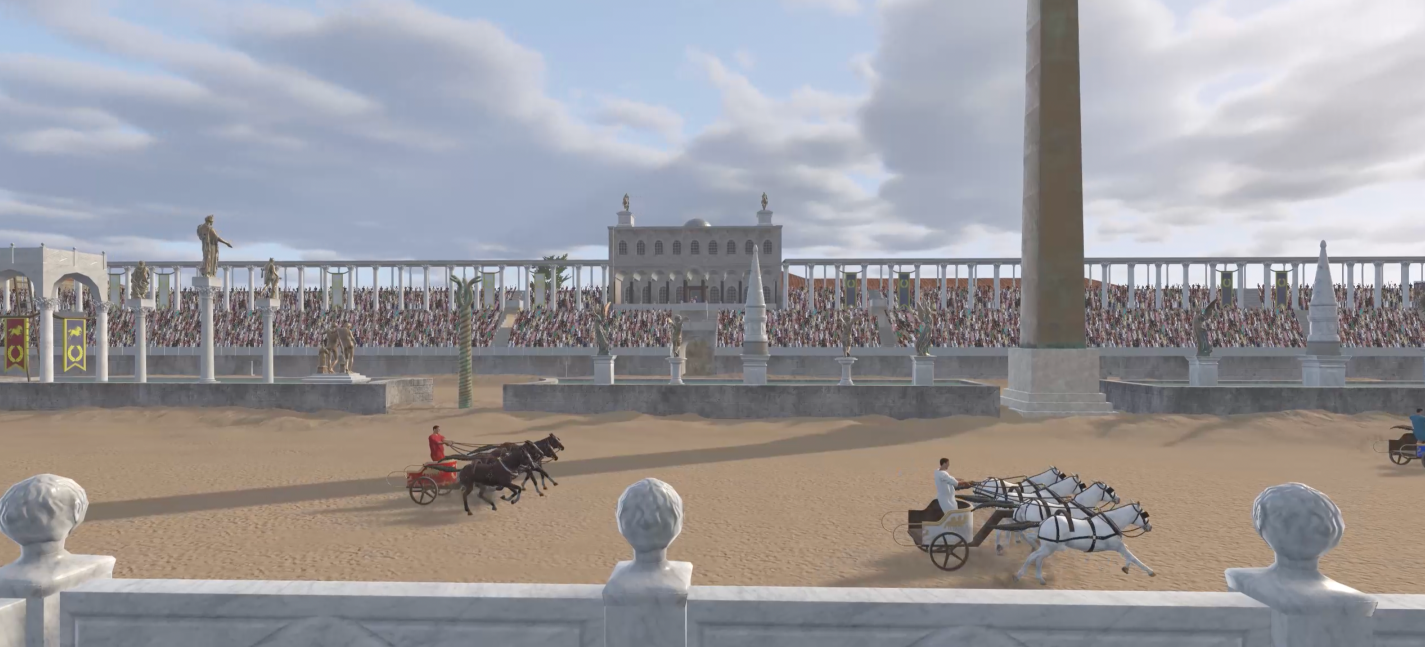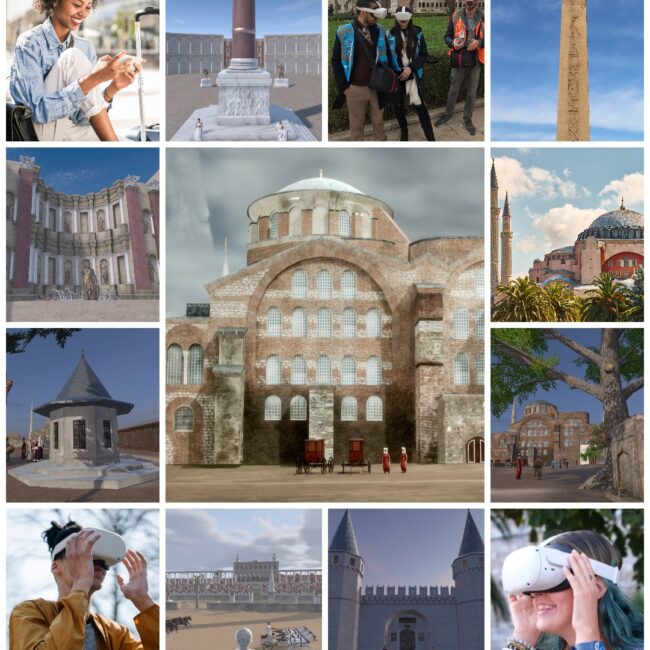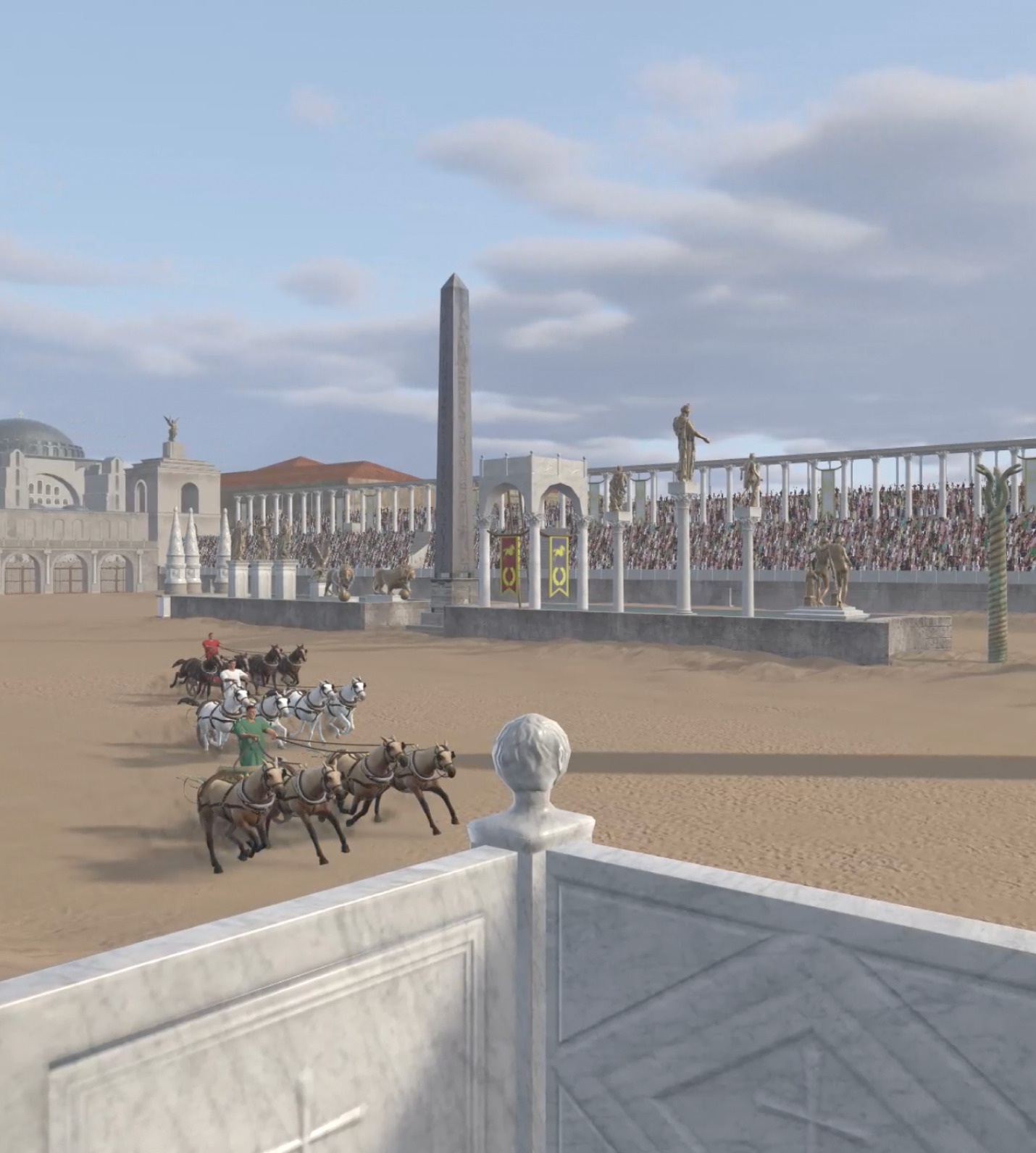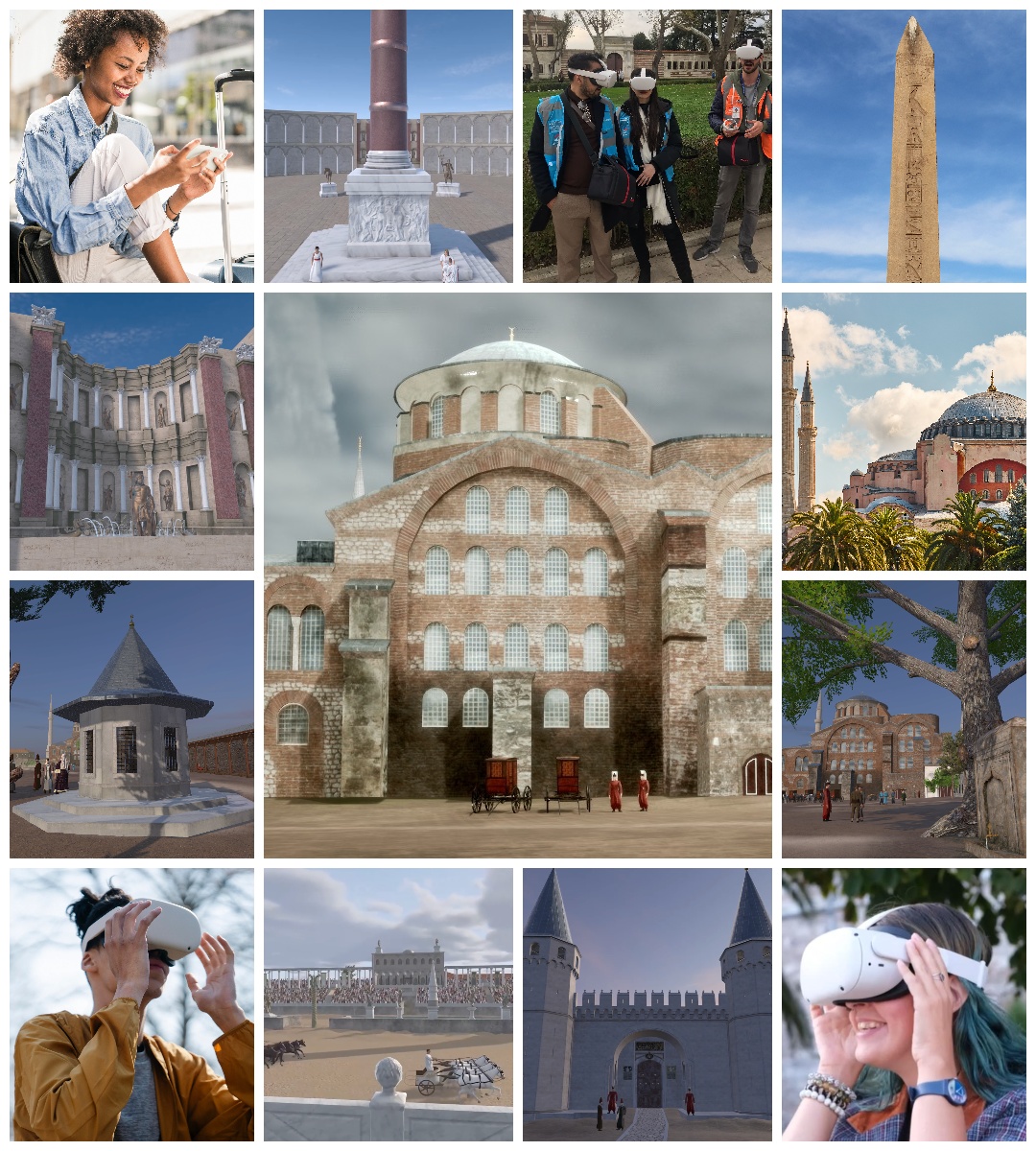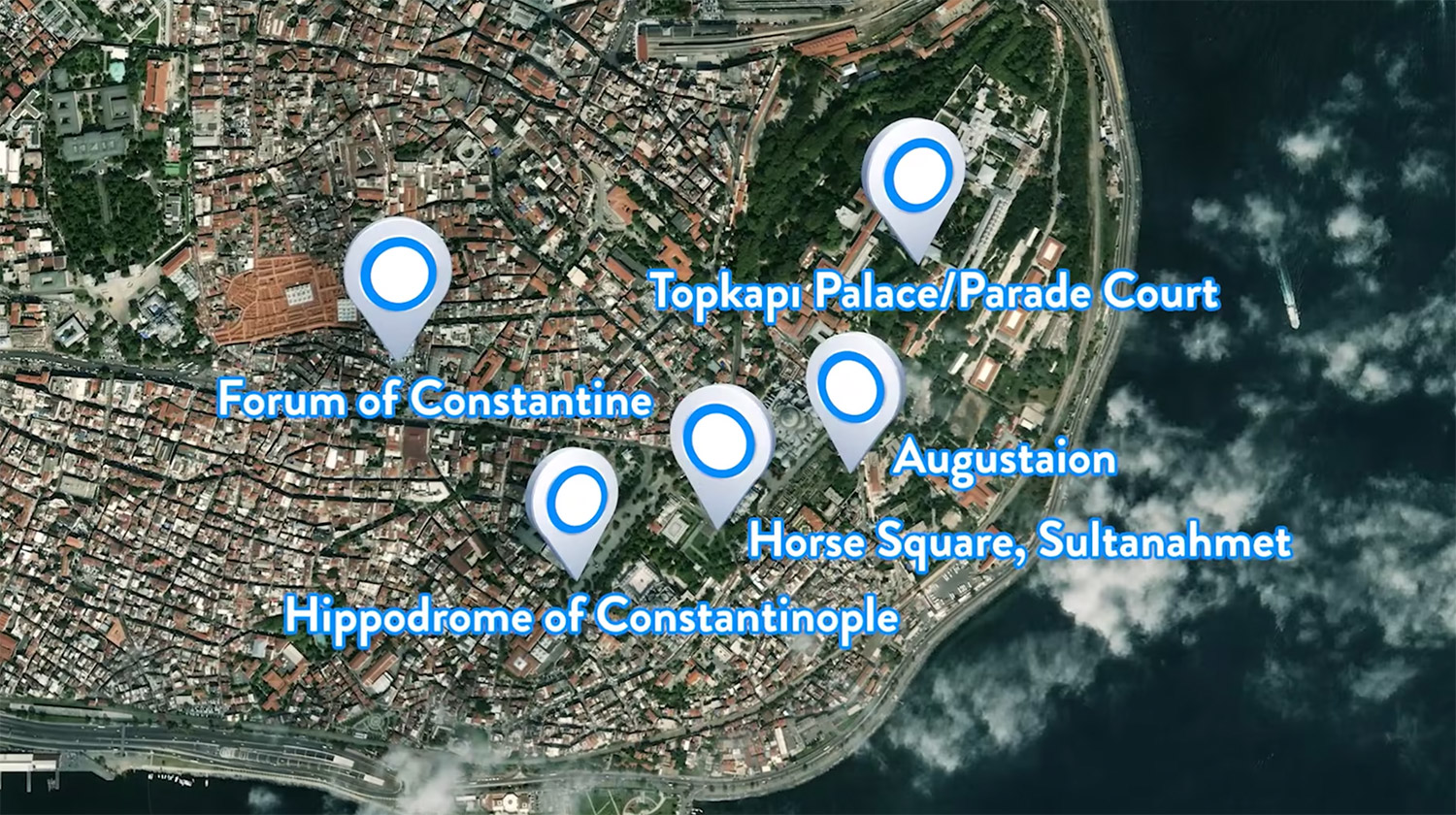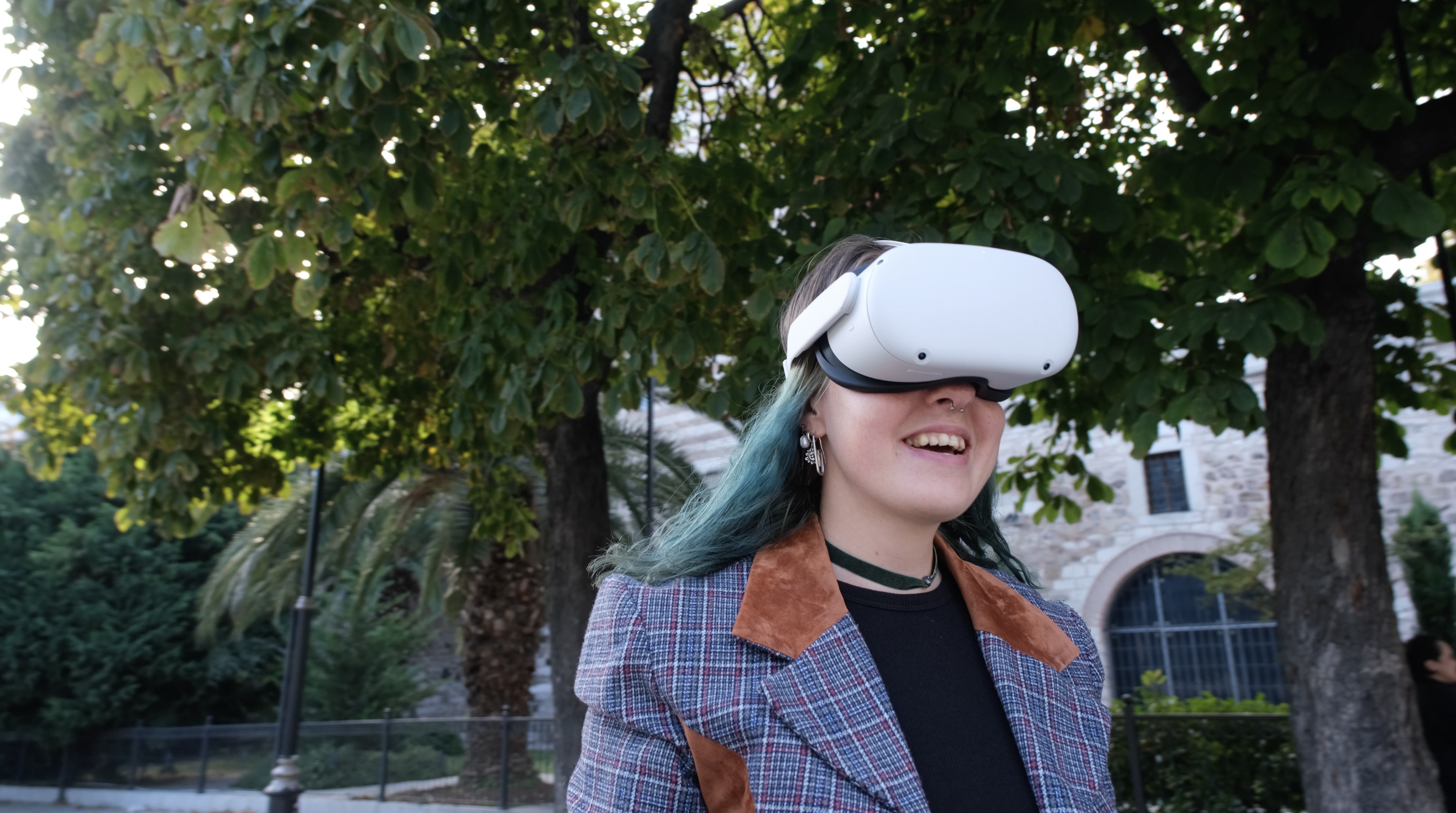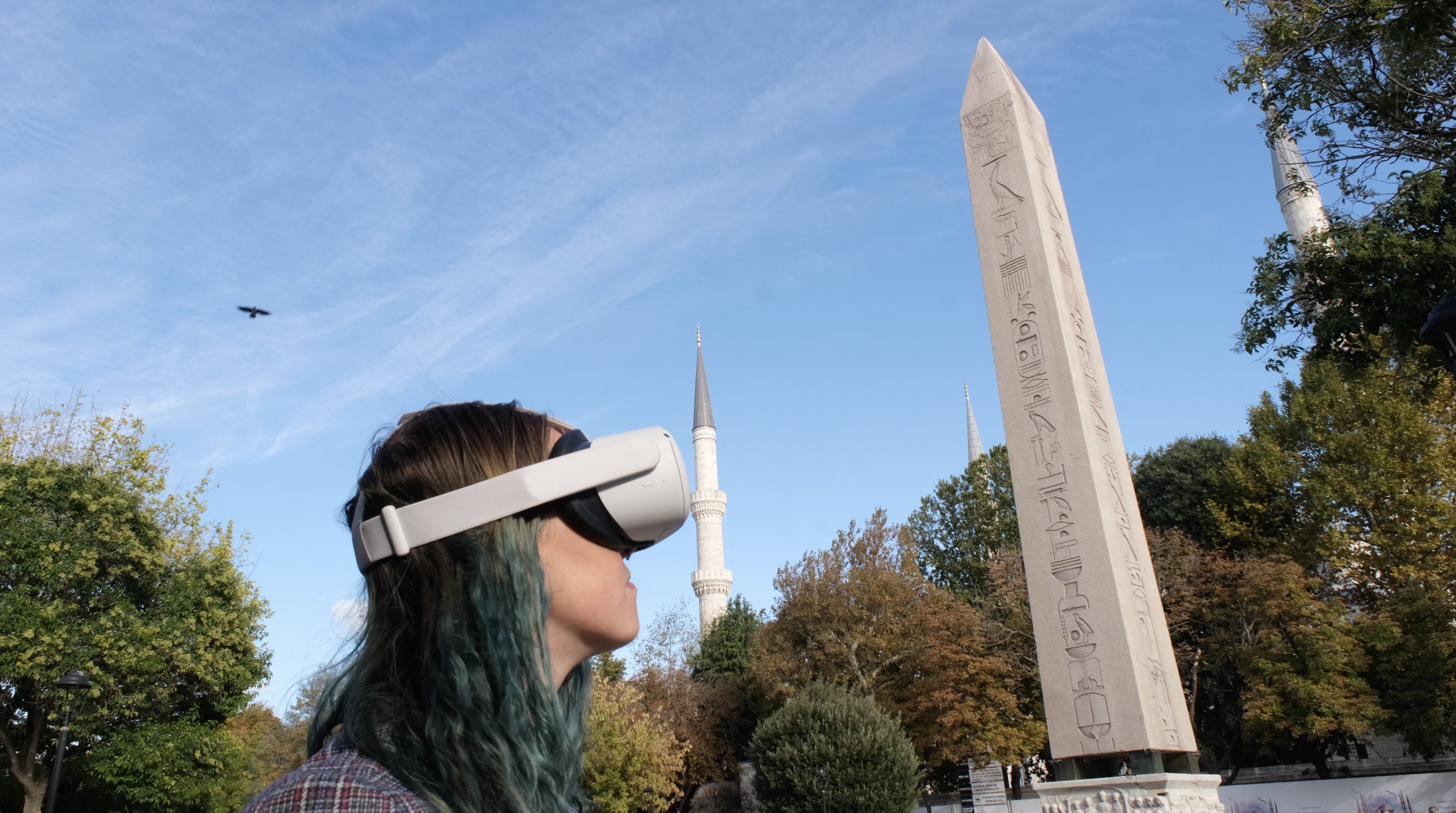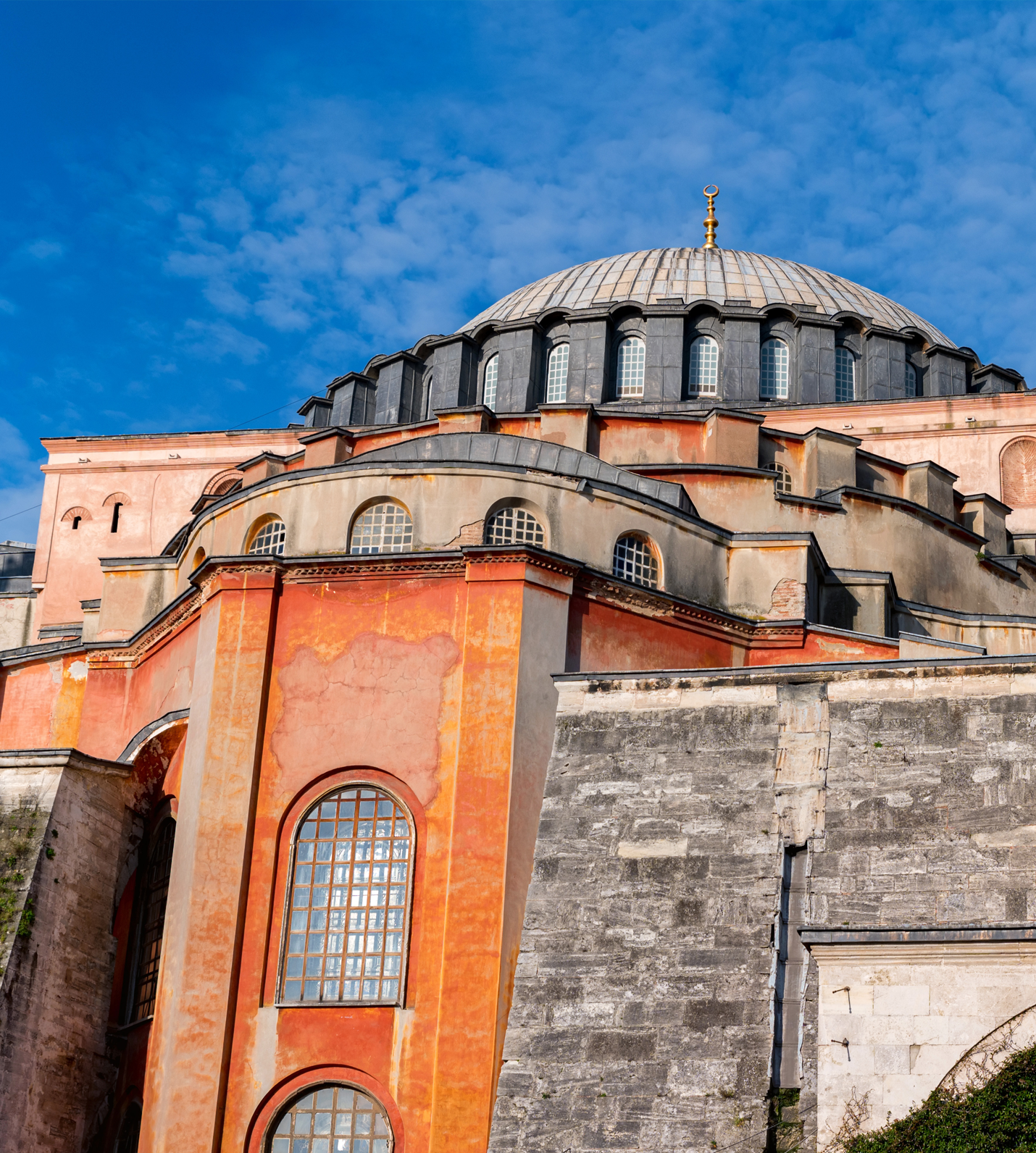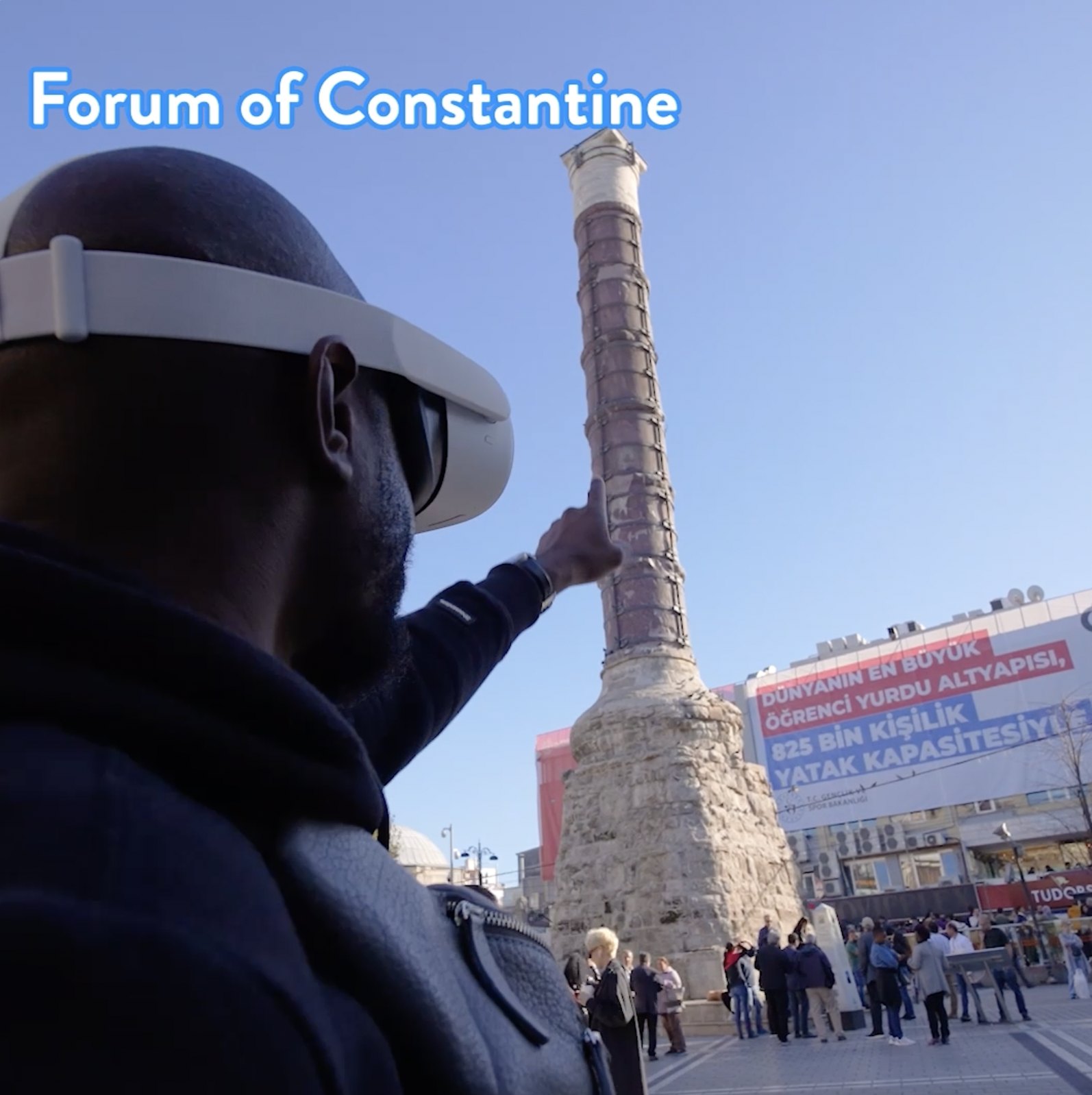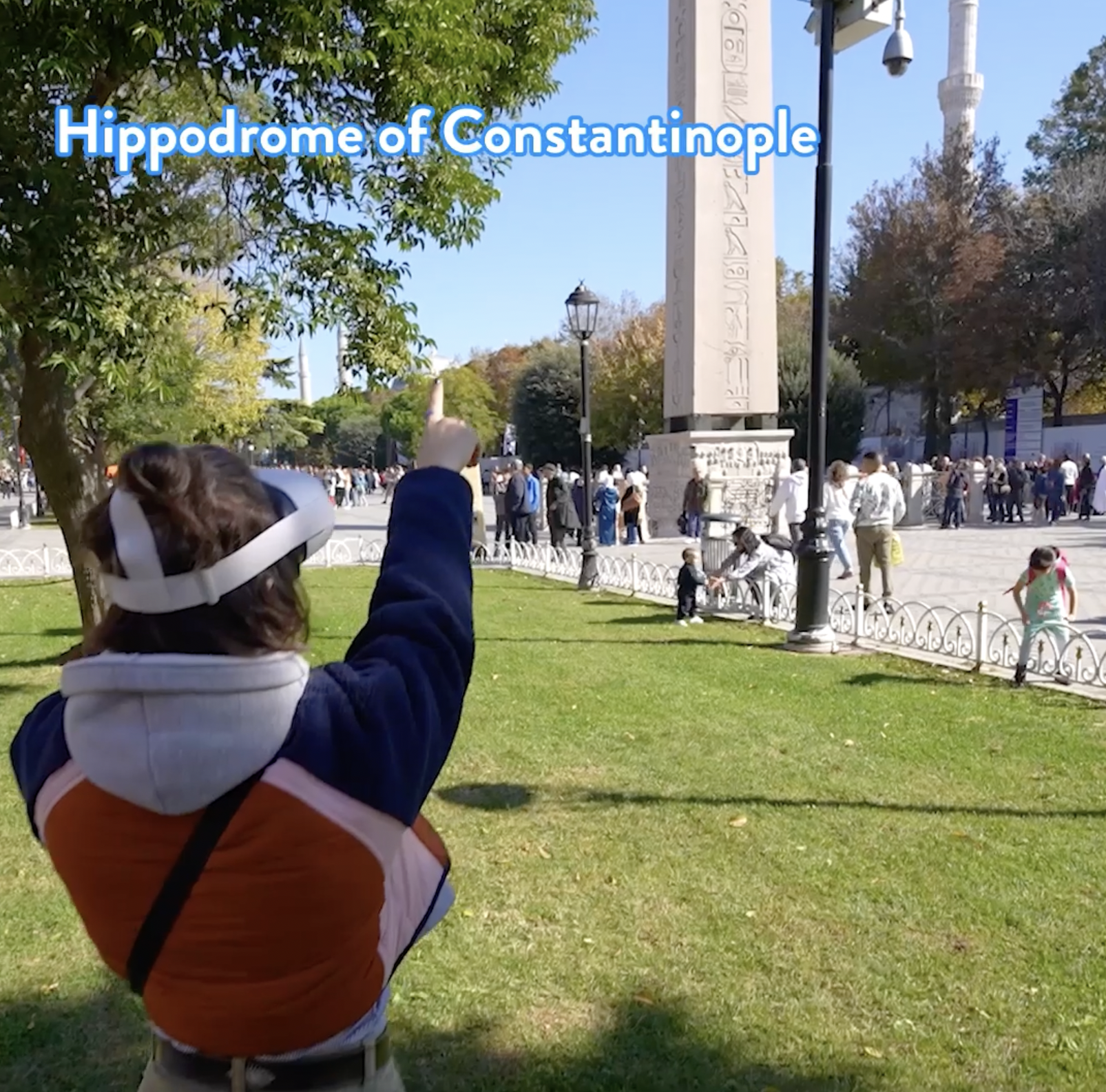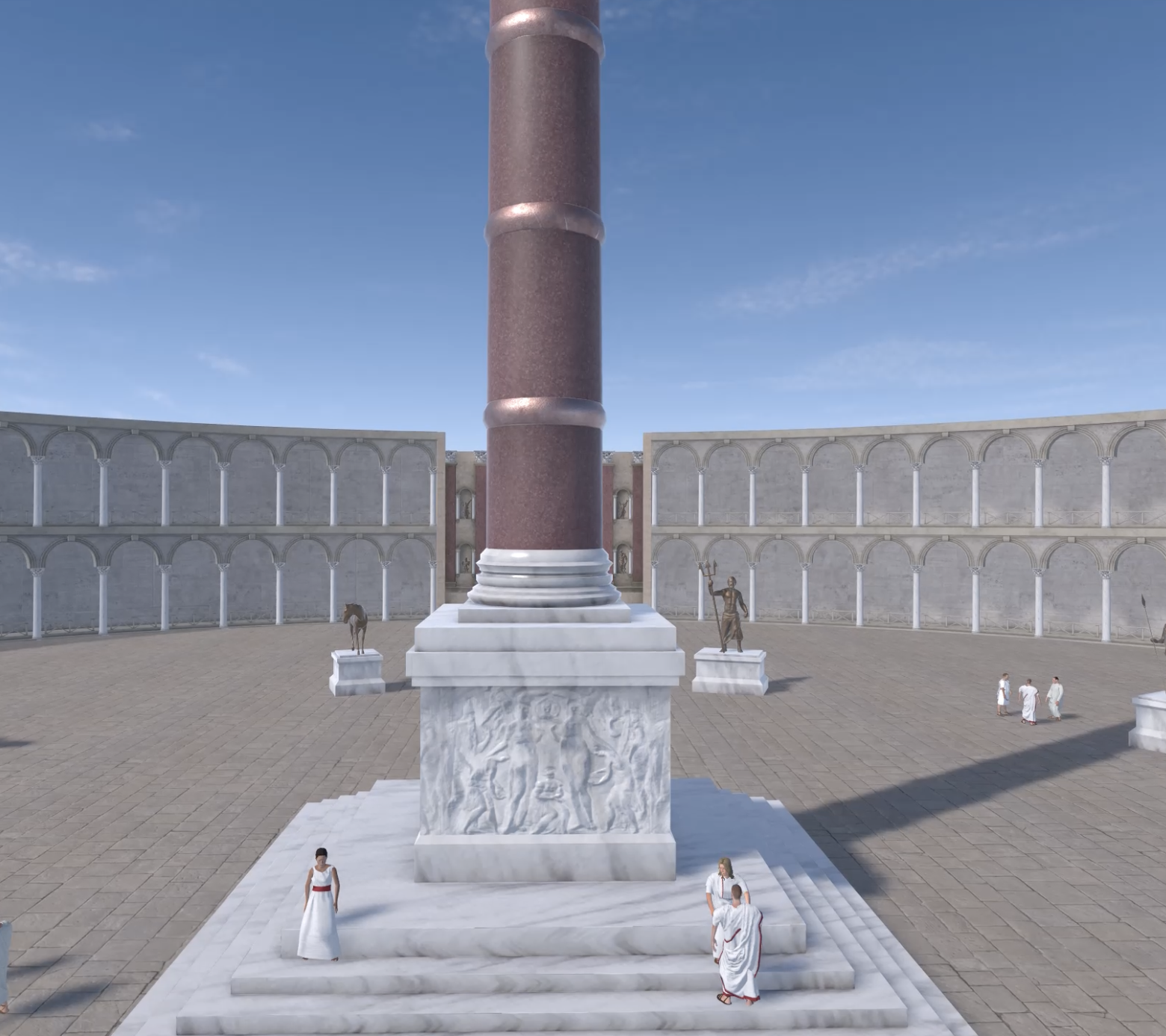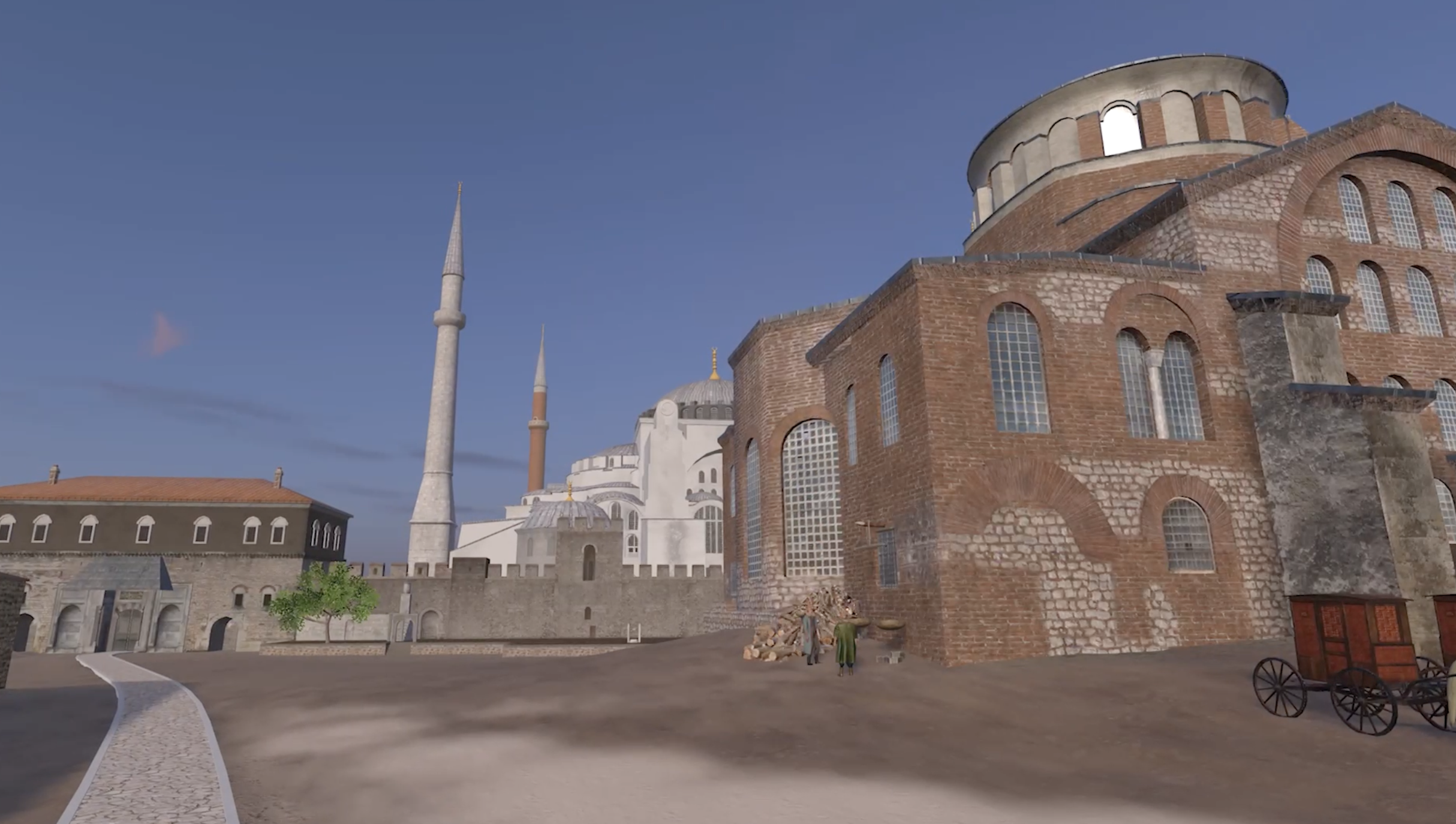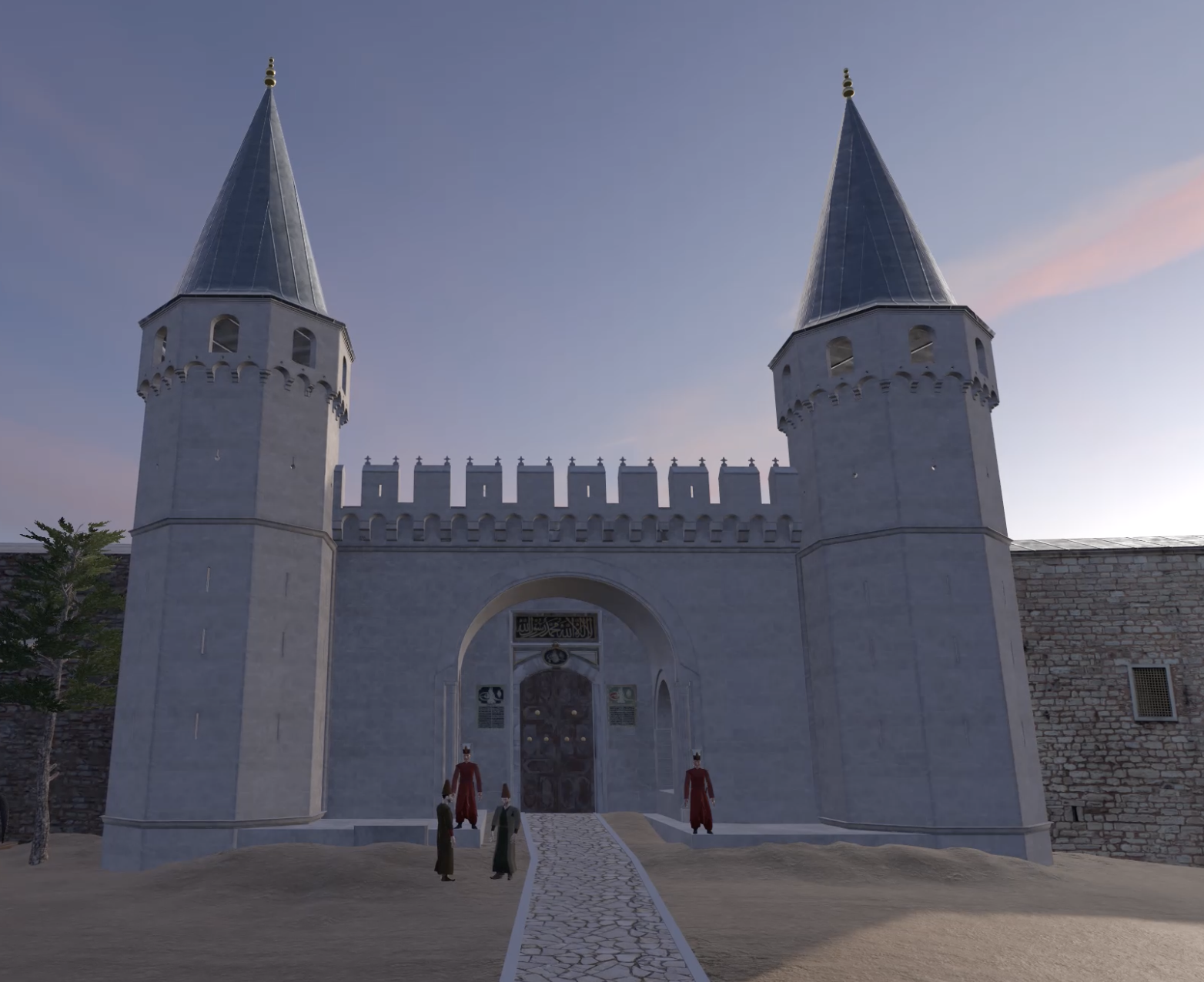Istanbul
Topkapı Palace Parade Court
The only courtyard in the palace that the public could enter was the First Courtyard, and the palace’s service buildings were separated from the courtyard by high walls. On the left were wood sheds, workshops for laying straw mats, construction and repair workshops. These workshops were where carpenters, stone masons, plasterers, locksmiths, plumbers, blacksmiths, glassworkers, and porters worked. Among the buildings on this side are the Church of Aya Irini, which was used as an Ottoman treasury, and the Darphane buildings, which were built in the 16th century and renovated and expanded in the 18th century. They still exist today. The Darphane, where gold and silver coins were minted, contained workshops belonging to the Ehl-i Hiref organization, the palace’s artists and craftsmen.
Augustaion Square (Hagia Sophia)
Augustaion (Greek: Αὐγουσταῖον Aúgoustaion) or (Greek: Augustaeum) was the ceremonial square of the ancient and medieval city of Constantinople (today Istanbul, Turkey) and corresponds to the area now known as Aya Sofya Square. Originally a marketplace, it was enclosed with colonnades in the 6th century and converted into a palace courtyard, and was associated with some of the most important buildings of the Byzantine imperial capital. The square remained in use until the late Byzantine period, but its ruins and traces were still visible in the early 16th century.
Horse Square (Sultanahmet)
After the conquest of Istanbul, this area where the Hippodrome was located has continued to exist as a place where horse races and chariot games were held under the name of Horse Square. Due to its proximity to the palace, its importance increased during the Ottoman Empire period. With the important structures built around it, the square acquired a new appearance, became the center of city life with festival celebrations, palace weddings and other events.
Hippodrome of Constantinople
The Hippodrome of Constantinople was a field used for chariot races during the Byzantine era. Originally built in the early 3rd century AD during the reign of Emperor Septimius Severus, it was transformed into a more magnificent structure by Emperor I. Constantine in the 4th century AD. The Hippodrome was also used for public events such as parades, executions, and the condemnation of the emperor’s enemies. In the early 13th century, following the Fourth Crusade, the Hippodrome lost its function due to the looting of its unique structures and works of art.
Forum of Constantine (Çemberlitaş)
The Forum of Constantine was built by Emperor I. Constantine to serve as the central square of his new capital, Constantinople. The city’s first forum was built directly in front of the main gate of the Byzantine city walls, dating back to the era of Septimius Severus. The circular square had two monumental gates leading to the city’s main street, the Mese. In the center of the forum, there is a porphyry column which is still standing today and known as Çemberlitaş. The forum remained mostly intact until it was plundered in 1204, from the time of its construction in 328.
-
Departure
Sultanahmet -
Departure Time
Approx. 10.00AM, 13.00PM, 16.00PM -
Return Time
Approx. 12.00AM, 15.00PM, 18.00PM -
Dress Code
Casual, comfortable -
Included
HeadphonePersonal GuideVR Headset
Tour Plan
Topkapı Palace Parade Court
Augustaion Square (Hagia Sophia)
Horse Square (Sultanahmet)
Hippodrome of Constantinople
Forum of Constantine (Çemberlitaş)
Tour Location
Time Travel VR Tour is a guided historical tour using Virtual Reality technology. Time Travel VR Tour offers innovative tourism services using VR technology. Experience Byzantine and Ottoman architectural and artistic structures in Istanbul with a objective perspective and contemporary scientific understanding through guided city tours in a virtual environment.




